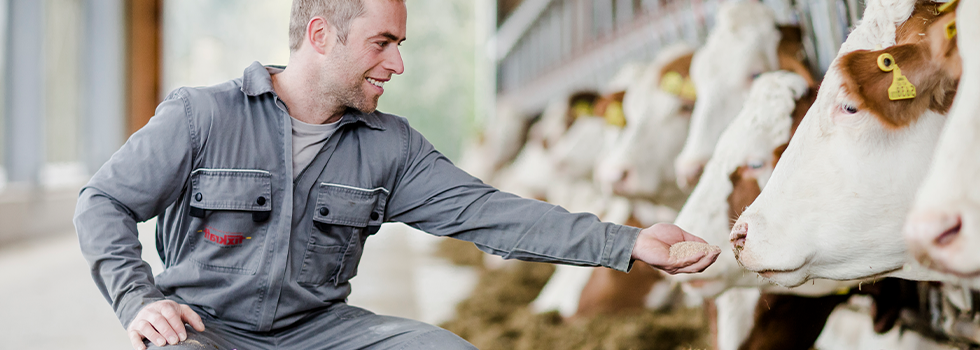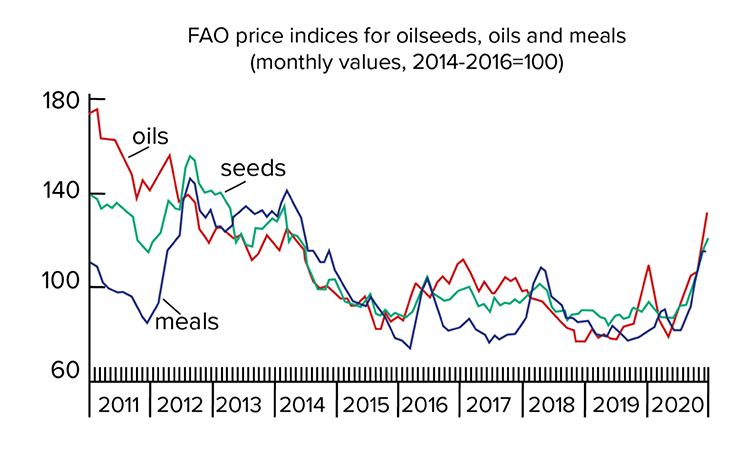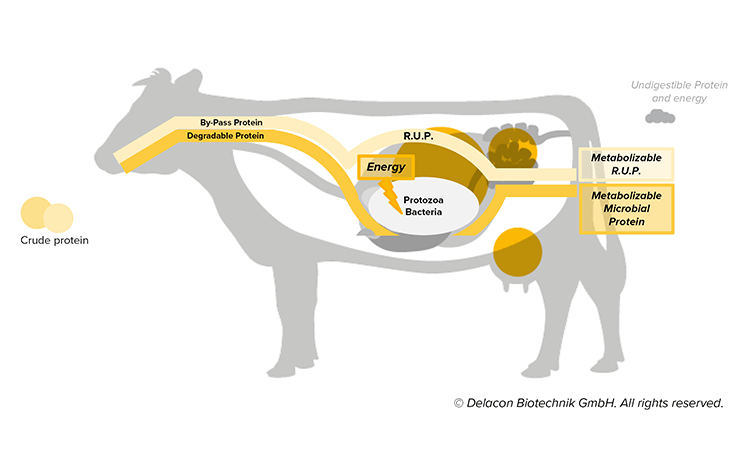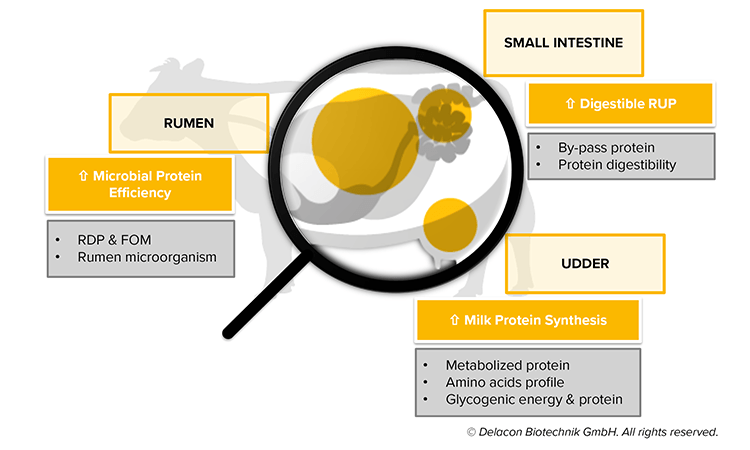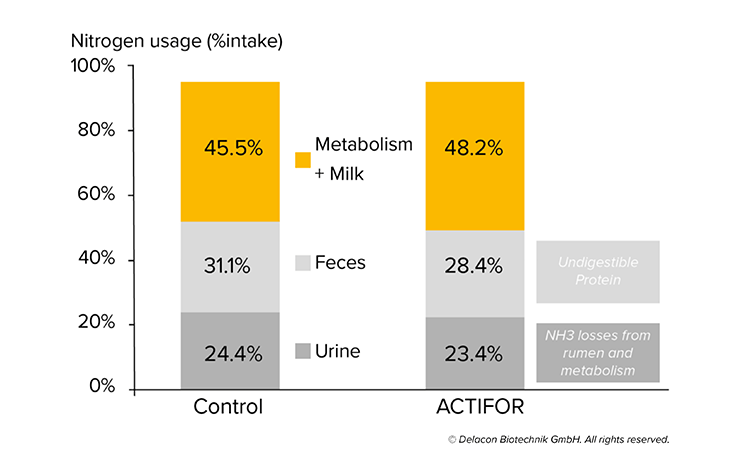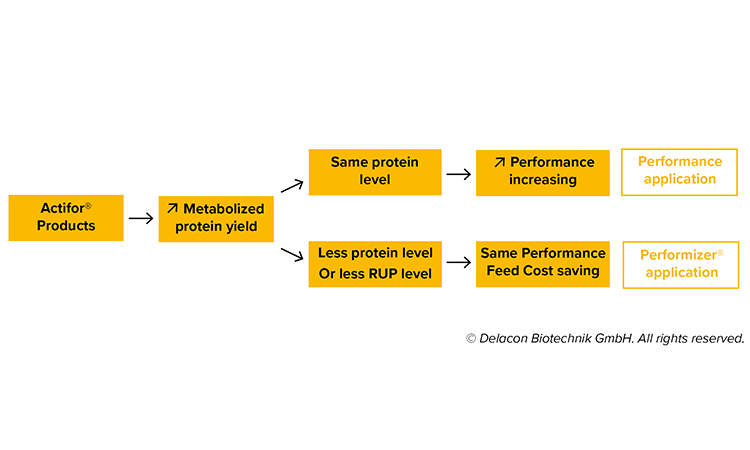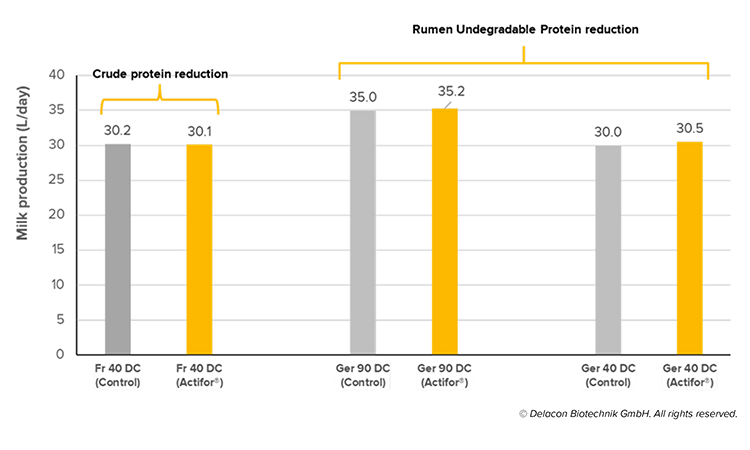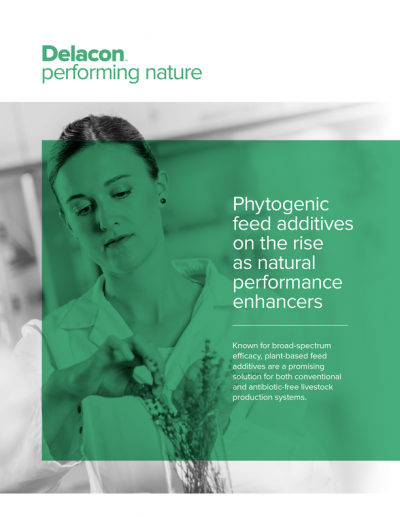Promotional Features
A new approach to improve margin and save feed cost in dairy production
Today's dairy farmers are permanently facing variations in feed crop and concentrate prices and fluctuations in milk prices that affect production costs.
Thus, nutrient use efficiency is generally considered a crucial factor influencing farm profitability in modern dairy farms. Moreover, feed efficiency and cost management are major tools in modern dairy production.
1 _ Evolution cost of raw materials
At the end of 2020, raw materials prices have started to increase again after several years of stability. Without an increase in the price of milk or meat, this rise in feed costs has a clear negative impact on the farm’s margin.
Delacon proposes a new approach to help farmers and feed mill companies save feed costs.
Protein efficiency
Ruminant animals have interesting physiology regarding protein metabolism.
The rumen microflora can synthesize microbial proteins from the rumen degradable protein (RDP), or the non-protein nitrogen, and the fermentable energy.
The amino acid profile of these microbial proteins is relatively stable and does not deviate too much from milk casein.
Some of the rumen bacteria can degrade proteins in ammonia (NH3) (protein hydrolyzation), and some of them may synthesize amino acids from ammonia and the carbon chain. This yield is relatively low (about 80%); it also depends on the nutrients level (fermentable organic matter, minerals, vitamins), synchronicity between degradable proteins, and fermentable organic matter rumen.
These microbial proteins will be digested in the abomasum and small intestine. Due to the yield in the rumen, the percentage of true protein, and the percentage of digestibility, we only reach between 50% and 60% of the metabolized yield.
In parallel, the rumen undegraded proteins (RUP) or bypass proteins are digested in the abomasum and the small intestine thanks to an acidic pH. In this case, the digestibility and the amino acid profile depend on the raw material characteristics. In the end, the yield of metabolized protein is generally higher compared to microbial protein (between 75% and 85% in the diet) and is directly linked with the protein digestibility of the raw materials.
Together, these two types of proteins will be metabolized in the small intestine to be used for milk protein synthesis and the non-productive requirements.
2 _ Protein metabolism in dairy cows
To improve the metabolized yield (or efficiency), we have different ways:
3 _ Protein metabolism yield improvement in cows
- Improved bypass proteins: we will have a higher metabolized yield thanks to a better usage compared to degradable proteins
- Microbial protein efficiency stimulation
- Small intestinal protein digestibility increase
- Amino acid balance in relation with the casein structure
Actifor improves nitrogen efficiency in dairy cows
Delacon has selected plant extracts (aldehic EO, spices, tannins, and saponins) in Actifor to enhance the efficacy of metabolized proteins in dairy cows.
4_Protein efficiency measurement in vivo trials, 2015
The Actifor products for dairy cows act on three levels:
- In the rumen: they improve the rumen function increasing the fermentable organic matter, leading to greater efficiency in microbial protein production. As a result, we reduce the NH4 losses from the rumen into the urine (transformed in urea).
- With a reduction of the degradation of the protein in the rumen: we increase the level of bypass protein. In this case, we have fewer protein losses in urine.
- They ensure better protein digestibility in the small intestine and reduce protein losses in the feces.
In an in vivo trial, ActiforPro reduced both protein losses in urine and feces, meaning that the diet´s nitrogen was used for milk production and maintenance. We could see that the protein efficiency was improved by 2.7%.
Performizer application
When applied, Actifor products increase milk production (+1.7 L/day), milk protein content (+0.5 g/kg), and reduce protein losses (-8.6% milk urea).
5 _ Performance effect of Actifor products in dairy cows
Actifor products increase the yield of metabolized protein, and for the same nutrient level (crude protein), they improve performance and protein efficiency.
Therefore, Delacon proposes another way for the Actifor products: the Performizer application.
In this case, we want to obtain the same performance with a nutrient level reduction.
6 _ Actifor products utilization in diets
With the Performizer application, we can reduce the dietary protein level; in this case, we will keep the same performance with a reduction in feed costs. We can reduce the crude protein level by approximately 0.5%.
Another possibility is to use this concept with a diet adjustment around the protein balance: in this case, we can reduce the bypass protein level (less RUP) by 0.5-1% and we can increase the degradable protein level (more RDP).
For this second option, we can replace bypass protein sources (e.g., protected soybean meal) with regular protein sources (regular soybean meal) or regular protein meal with non-protein nitrogen sources (urea, vinasses).
With this Performizer application, Actifor products reduce feed cost according to the situation by an equivalent of 1 L of milk with an average increase of 0.8 L of the milk production.
7 _ Performance improvement in dairy cows with Actifor product including feed cost savings (Performizer)
In parallel, this diet modification (crude protein reduction or bypass protein reduction) with Actifor product inclusion reduces protein emissions in the environment thanks to this higher protein efficiency.
With this new approach, for compound feed and the diet design, the use of Actifor products will increase the flexibility in terms of raw material:
- For example, we can reduce soybean meal or corn grain dependency by using secondary raw materials or byproducts.
- We can replace protected soybean meal or protected rapeseed meal with non-protected raw materials.
- In GMO-free or organic milk production, GMO-free soybean meal or organic protein sources are more expensive because of a lack of availability.
- Cheaper, non-protein nitrogen raw materials can also be used: urea, vinasses (a byproduct of molasses).
In conclusion, the Performizer application is an excellent tool to reduce costs in livestock, with at minimum the same performance and greater flexibility to design the diet and the compound feed. Additionally, thanks to a reduced nutrient level, this application of Actifor products reduces protein emissions in the environment and decreases the carbon footprint impact.
